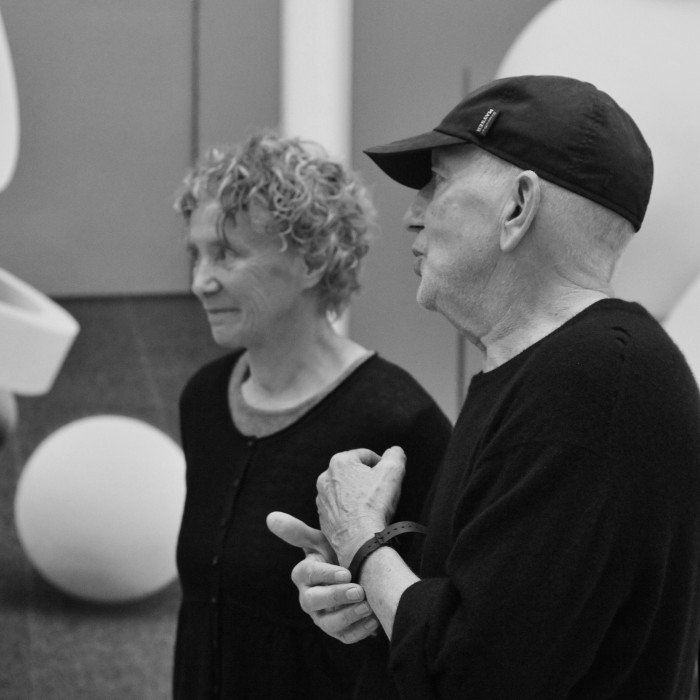Anna & Bernhard Blume
Photography
Anna & Bernhard Blume
Photography

The whimsical photographic narratives of Anna Blume (1936–2020) and Bernhard Johannes Blume (1937–2011) have established the artist couple as internationally significant figures in staged photography.
When, in photos, potatoes hurtle through the kitchen like projectiles, trees dart through the landscape like spears, or plates shatter midair, it can only be the work of Anna & Bernhard Blume. In their photographs, conventional, middle-class living rooms became stages for fantastical actions or “crime scenes” of surreal events.
The two artists, who met at the Kunstakademie Düsseldorf, began working together in Cologne in the mid-1970s. By the 1980s, Anna & Bernhard Blume were exhibiting their work in major museums around the world—including the Museum of Modern Art in New York, the Museum Hamburger Bahnhof in Berlin, the Museum Ludwig in Cologne, the Milwaukee Art Museum in Milwaukee, the Museum für Moderne Kunst in Frankfurt, and the Centre Pompidou in Paris.
For all their humor, the works of Anna & Bernhard Blume serve as seismographs of sociopolitical developments. Themes such as climate change, gender equality, and identity became central concerns early on.
Transcendence also plays an important role in the artists’ work. In a 2011 statement on their series Trans-Skulptur, they asked: “Is there perhaps still a need today for sentimental allusions to something wholly different and otherworldly?”
Anna & Bernhard Blume’s staged compositions are never didactic; rather there’s an endearingly hapless quality to the protagonists and their actions. Time and again, Anna & Bernhard Blume explored everyday life in multi-part, often large-format and wall-spanning, black-and-white series. Their preferred places and elements include kitchens, living rooms, watering cans, ladders, or dishes. In their series Spiritistische Sequenzen, white cubic forms hurtle through a room, while in Wahnzimmer, furniture appears to fly through space. And in Vasenextase, vases whizz through the air like projectiles.
The two artists handled all aspects of the work themselves. They selected the setting, assembled the props, and constructed the scenes. Then they assumed the roles of actors and staged themselves in front of the camera—hanging from branches, wedged between tree trunks, or ducking from flying soup bowls and potatoes. The influence of 1960s performance art is palpable here. They even developed the films and produced the large-format baryta prints, some measuring up to 250 x 130 centimeters, by hand in their studio.
There’s a uniquely homemade quality and imperfection to their photographs. The settings often appear poorly lit, the images slightly out of focus. This was always part of Anna & Bernhard Blume’s concept, an approach they described as “provocative amateurism.”
“And who presses the shutter?” Bernhard Blume was once asked. His answer: “We take turns holding the camera.”
The couple’s works are featured in major collections including the Neue Nationalgalerie, Berlin; the Museum für Moderne Kunst, Frankfurt am Main; the Sprengel Museum, Hanover; the Vancouver Art Gallery, Vancouver, BC; the Centre Georges Pompidou, Paris; and the Museum of Modern Art (MoMA), New York.
The publication In Cahoots - Kunsthalle Krems provides further insights into the artists’ work.
Buchmann Gallerie has presented seven solo exhibitions with Anna & Bernhard Blume to date.